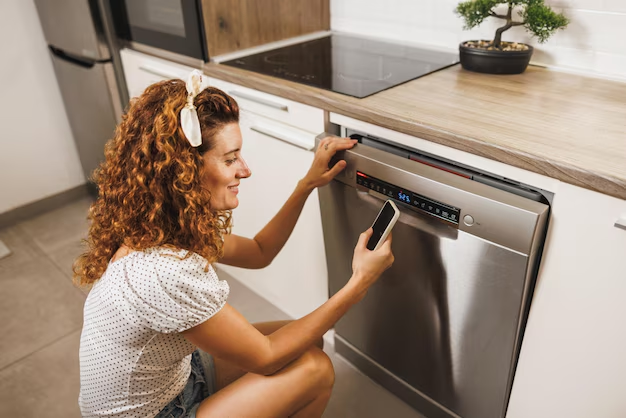Mastering Your Samsung Refrigerator: How to Adjust the Temperature for Perfect Freshness
Is your food not quite as fresh as you'd like it to be, or perhaps you're seeing frost accumulations that shouldn’t be there? Knowing how to properly adjust the temperature on your Samsung refrigerator can make all the difference in maintaining the best quality for your groceries. This comprehensive guide will walk you through the steps needed to adjust the temperature effectively, ensuring your appliance works its best for your needs. Whether you're a first-time user or just need a refresher, we've got you covered. 😊
Understanding Your Samsung Refrigerator Settings
Before diving into the specifics of adjusting temperatures, it helps to understand what the different settings on your Samsung refrigerator actually mean. Samsung refrigerators are equipped with advanced technology that offers various temperature control options to suit different storage needs.
The Control Panel: Your Primary Interface
The main interface for temperature control is the control panel, typically located on the inner top section of your fridge. This panel may include:
- Digital displays showing current temperatures
- Buttons for adjusting temperature settings
- Indicators for various modes like Power Cool or Vacation Mode
Temperature Ranges and Recommendations
Understanding the ideal temperature settings is key to ensuring your food stays fresh and safe to eat. Generally, experts suggest:
- Refrigerator: Set between 37°F (3°C) to 40°F (4°C)
- Freezer: Set at 0°F (-18°C)
These temperatures are designed to keep your perishable food fresh while minimizing bacteria growth and preventing freezer burn.
How to Adjust the Temperature on Your Samsung Refrigerator
Let's get into the practical steps to adjust the temperature settings on your Samsung refrigerator. Depending on your model, the way you adjust the temperature might slightly vary, but the principles generally remain the same.
Step-by-Step Guide to Adjusting Temperature
Locate the Control Panel: This is where you'll primarily be making adjustments. It's often found on the interior roof of the fridge compartment.
Access Temperature Display: Press the Fridge or Freezer button to display the current temperature setting.
Adjust as Needed: Press the same button repeatedly to cycle through different temperature settings until you reach your desired temperature.
Wait for the Change: Allow some time for the fridge or freezer to adjust to its new settings, usually several hours.
What to Do if the Temperature Doesn’t Change
In some cases, you might find that the temperature doesn't adjust as expected. Here are a few troubleshooting steps:
- Check for Obstructions: Ensure that air vents are not blocked by food items, which can affect temperature regulation.
- Verify Door Seals: Ensure the doors seal properly and are not letting warm air inside.
- Power Source: Confirm that your fridge is properly plugged in and receiving power.
Using Smart Features and Modes
Many Samsung refrigerators come equipped with smart features that can make temperature management even easier.
- Power Cool/Freeze: Use this setting if you need to quickly lower the temperature—for example, if you’ve just stocked up after a grocery run.
- Vacation Mode: Ideal for times when you'll be away, saving energy while keeping perishables safe for longer durations.
Practical Tips for Optimal Refrigerator Performance
Making adjustments is important, but so is knowing how to maintain your appliance for long-term efficiency.
Organization Matters
Proper organization within your fridge can have a surprisingly large impact on its efficiency:
- Avoid Overpacking: Ensure that air can circulate freely inside.
- Aid Shelf-Life: Store different types of food in their optimal zones—dairy and eggs at the top, meats in the coldest section.
Regular Maintenance
Regular maintenance is key to the long life of your appliance:
- Clean Coils: Periodically clean the coils to ensure efficiency.
- Replace Filters: If your model has a water or air filter, replace it per the manufacturer's recommendation.
Environmental Considerations
Understanding how your fridge interacts with its environment can offer additional insight:
- Room Temperature: Ensure room conditions are stable; extreme temperatures can affect performance.
- Leveling: Make sure your refrigerator is level to prevent doors from hanging ajar.
Quick Reference Summary 🎯
Here’s a handy, skimmable bullet-point summary to guide your refrigerator management:
- 🌡️ Ideal Temperatures: 37°F (3°C) for the fridge, 0°F (-18°C) for the freezer
- 🛠️ Adjusting Temp: Use the control panel—press ‘Fridge’ or ‘Freezer’ to cycle through temp options
- 🚪 Check Seals: Ensure doors seal properly to maintain set temperatures
- ⏱️ Allow Time: Give hours for temperature adjustments to stabilize
- 📈 Use Modes: Utilize Power Cool for quick cooling; Vacation Mode when away
- 🧹 Regularly Clean: Dust coils and replace filters to maintain efficiency
By managing these settings and routine tasks, you'll keep your Samsung refrigerator running optimally and your food fresh.
In conclusion, understanding and adjusting your Samsung refrigerator's temperature is relatively straightforward but highly beneficial for maintaining food quality and appliance longevity. Whether it's organizing storage, utilizing smart modes, or performing routine checks, each step contributes to a more effective refrigerator. Stay empowered and enjoy the fresh, efficient performance of your Samsung appliance! 🌟
